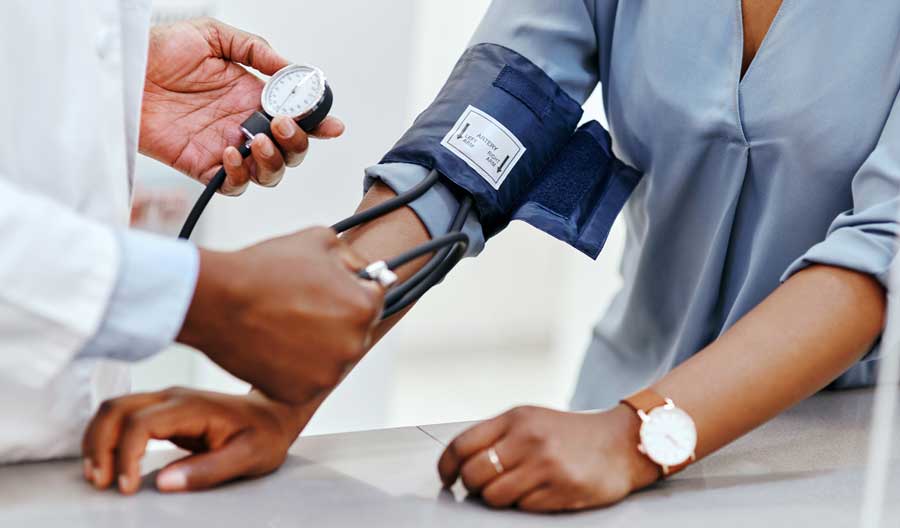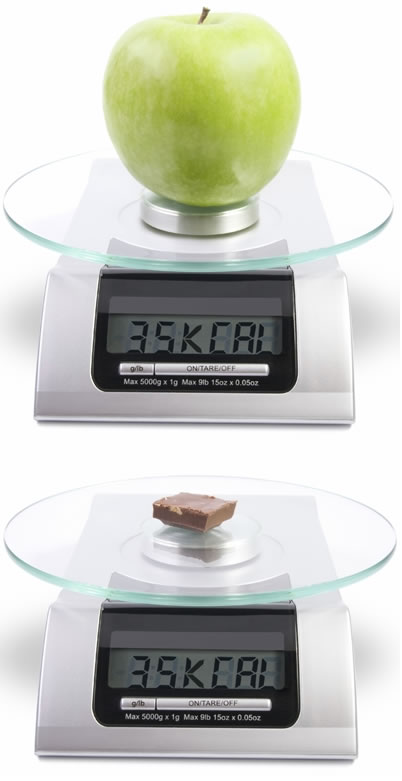Lowering Blood Pressure Naturally – 7 Tips
The higher our blood pressure, the greater our risk of stroke, heart attack, congestive heart failure, kidney disease, impotence, and dementia. That’s why it’s so critical to lower blood pressure to healthy, normal levels. With lifestyle changes alone (no pills needed), many of us can do it.

We’ll start with basic Q & As about high blood pressure (hypertension).
What is blood pressure?
Blood pressure is part of our body’s natural, normal functions. It is the force of blood pushing against our artery walls. But when blood pressure remains high, it can lead to serious health problems.
High blood pressure, or hypertension, is the #1 risk factor for the approximately 800,000 strokes Americans suffer each year.
Hypertension is also responsible for about half of all deaths from heart disease.
What numbers constitute high blood pressure?
For years, high blood pressure was defined as 140/90 or higher.
How Quickly Do These Tips Work?
While the published research on the Pritikin Program focuses on results achieved after following the program for three weeks, the physicians at the Pritikin Longevity Center point out that for many guests at the Center, blood pressure begins dropping much sooner – almost immediately, in fact. Many guests can reduce their high blood pressure, also known as hypertension, in as little as 3 days to 3 weeks.
How Long Does It Take To Lower Blood Pressure? »
But in revised guidelines established in 2017, the American Heart Association, the American College of Cardiology, and nine other health organizations declared that high blood pressure is now defined as 130 and higher for systolic blood pressure (the top number), or 80 and higher for diastolic blood pressure (the bottom number).
The changes were made because of the overwhelming body of research showing that waiting till 140/90 is waiting too long. Dramatic increases in heart attack and stroke risk do not begin with blood pressure readings of 140/90. They begin at much lower readings like 130/80.
Lowering Blood Pressure Naturally – 7 Tips
Numerous studies over the past three decades have found that hypertension can largely be prevented and/or reversed simply by changing our diet and lifestyle.
For example, the Pritikin Program of diet, exercise, and lifestyle-change has been documented in peer-reviewed research to greatly improve blood pressure numbers.
What’s more, studies have found that within two to three weeks, many people leave the Pritikin Longevity Center, where they learned healthy food and fitness habits, no longer needing their medications for hypertension, or with their dosages greatly reduced.
Below are 7 key diet/lifestyle tips recommended by the physicians, registered dietitians, exercise physiologists, and other faculty at Pritikin Longevity Center.
1. Eat at least 5 servings of vegetables and 4 servings of fruits daily.
A vegetable- and fruit-rich eating plan helps ensure that you’re eating plenty of foods full of stomach-filling volume, yet low in calories, enhancing your weight-loss efforts. Losing excess weight is one of the most effective ways to lower blood pressure.
Eating a lot of fruits and vegetables also means you’re eating rich sources of potassium, magnesium, and calcium. Many studies have found that foods plentiful in these minerals help blunt some of the toxic effects of sodium.
2. Cut back on calorie-dense foods.
Calorie-dense foods tend to be foods loaded with fat, sugar, and/or refined grains. Eating significantly less of these foods every day will boost your weight-loss efforts.
Keep in mind that keeping track of the calorie density of the foods you eat is different from counting calories.

Calorie density is the number of calories in a given volume of food. Certain foods have more calories packed into them – bite for bite, or pound for pound – than others. Fresh tomatoes, for example, have 90 calories per pound. Bagels have about 1,300 calories per pound. Yes, that means that with each bite of bagel, you’re taking in 14 times as many calories as each bite of tomato.
Knowing a food’s calorie density is vital because when we sit down to eat, we pretty much eat (or want to eat) based on volume. We want to fill up our stomachs, curb hunger, and feel satisfied. Well, as you can see from the tomato vs bagel calorie density numbers, satisfying our hunger on bagels is going to ratchet up a lot more calories than satisfying our hunger with vegetables like tomatoes.
Curbing hunger is vital for long-term weight-control success. No diet that leaves us feeling chronically hungry (which is what most calorie-counting diets do) will last for long. By contrast, paying attention to the calorie densities of the foods we eat allows us to fill up with hefty amounts of food, but not hefty amounts of calories.
The “Calories Per Pound” chart below gives you a sense of how widely varying the calorie density of different foods can be.
As a general rule, stick to the green categories (Vegetables to Lean Protein) which are essentially the Pritikin Eating Plan. By doing so, you’ll:
- You’ll naturally take in fewer calories.
- You’ll enjoy satisfying amounts of food throughout the day.
- You’ll never again feel, “I’m always hungry.”
- The foods you’re eating will be healthy and nutrition-rich – the best foods not only for losing excess weight but also for preventing or controlling hypertension, heart disease, diabetes, and many other health concerns.
Fruit
Nonfat Dairy Foods
Other Fiber- and Water-Rich Foods | Such as potatoes, sweet potatoes, and cooked-in-water whole grains like oatmeal, brown rice, and whole-grain pasta
Lean Sources of Protein | Such as fish, skinless white poultry, lean game meat like bison, egg whites, and legumes (beans) like pintos, garbanzos, and lentils
Fatty Sources of Protein | For example, beef, dark poultry with skin, and full-fat dairy foods like cheese
Refined, Dry Carbohydrates | Like breads, cold cereals, pretzels, crackers, baked chips, and dried fruit
Junk Food | Like candy bars, cookies, croissants, donuts, and potato chips
Butter/Margarine
Oils/Fats | Such as bacon grease, lard, shortening, olive oil and all other oils
3. Limit consumption of sodium to a healthy level.
The physicians and other faculty at Pritikin agree with sodium recommendations established by the American Heart Association2 as well as the Centers For Disease Control. AHA advises that an ideal limit for most adult Americans is no more than 1,500 mg of sodium a day. CDC supports the same recommendation.
Limiting salt intake really works, especially for those most in need. Many studies have shown that the higher blood pressure is and the more salt is restricted, the greater the fall in blood pressure.
Keep in mind that most of the salt (sodium chloride) we eat comes not from the salt shaker on our dining room table but from restaurant and processed foods like canned soups, snack foods, and frozen meals.
So do read food labels. A good rule of thumb that the nutritionists at the Pritikin Longevity Center use is: Keep sodium count as low as (or lower than) calories. For example: If the calories per serving on the Nutrition Facts Label are 100, do your best to keep milligrams of sodium per serving at 100 or below.
4. Limit alcohol drinking.
Excess alcohol drinking (more than 3 drinks daily) has been shown to increase the risk of hypertension.
5. Exercise daily.
Daily physical activity promotes loss of excess weight, vital for controlling blood pressure. It also stimulates the body’s production of beneficial chemicals like nitric oxide that expand blood vessels and increase blood flow.
The Pritikin Exercise Plan taught at the Pritikin Longevity Center is safe, comprehensive, and evidence based, and involves three key parts:
- Aerobic exercise daily, a minimum of 30 minutes and optimally 60 to 90 minutes, alternating moderate-intensity days with vigorous-intensity days
- Full-body resistance routine two to three times weekly; and
- Stretching exercises daily to greatly enhance overall flexibility and ability to exercise more freely.
6. Get adequate intake of calcium, omega-3 fatty acids, and vitamin D.
Studies suggest that adequate amounts of all the above may help with blood pressure control.
7. Quit smoking, or don’t start.
Many smokers have become nonsmokers while at the Pritikin Longevity Center by taking advantage of the personalized behavioral counseling in Pritikin’s Stop Smoking Program.
Control Blood Pressure Without Medications
Most people with hypertension can effectively control their blood pressure without the need for medications by following the Pritikin Program. Those who still need pills usually require lower dosages and/or fewer drugs, thereby reducing their risk of suffering adverse side effects from the drugs.
Best Meals For Lowering Blood Pressure
For many of us, the trick for lowering blood pressure naturally is finding meals that don’t contain crazy amounts of sodium.
What’s often shocking is the amount of sodium in convenience foods like canned soups. As mentioned earlier, most of us are supposed to be consuming no more than 1,500 milligrams of sodium a day. But guess how much sodium is in one typical can of a popular supermarket soup? About 1,200 to 1,700 milligrams.
So with just one can of soup, we’re often using up our total daily allotment for sodium. Mmm mmm good? Not even close if we want good arteries, good blood pressure, and good health.
For a healthy, tasty alternative that you don’t have to spend time cooking yourself, order some delectable dishes from Pritikin Foods, which are available for convenient delivery straight to your door, nationwide!
The Best Way to Lower High Blood Pressure Naturally
For almost years, the Pritikin Program has offered a safe, effective, and scientifically-documented3 alternative to pharmacological therapy. Sums up Dr. Danine Fruge, MD, ABFP, Medical Director at the Pritikin Longevity Center: “The Pritikin Program eliminates the dietary insults and other lifestyle-related factors that cause hypertension to develop in the first place.”
Sources
- 1 CDC. Vital signs: awareness and treatment of uncontrolled hypertension among adults—United States, 2003–2010. MMWR. 2012;61(35): 703.
- 2 AHA. “How much sodium should I eat per day?”
- 3 Journal of the CardioMetabolic Syndrome, 2006; 1: 308. Metabolism Clinical and Experimental, 2006; 55: 871. Journal of Applied Physiology, 2005; 98:3.